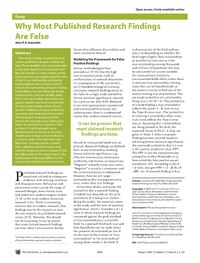
Photo from wikipedia
Abstract To investigate the effect of image preprocessing, in respect to intensity inhomogeneity correction and noise filtering, on the robustness and reproducibility of the radiomics features extracted from the Glioblastoma… Click to show full abstract
Abstract To investigate the effect of image preprocessing, in respect to intensity inhomogeneity correction and noise filtering, on the robustness and reproducibility of the radiomics features extracted from the Glioblastoma (GBM) tumor in multimodal MR images (mMRI). In this study, for each patient 1461 radiomics features were extracted from GBM subregions (i.e., edema, necrosis, enhancement, and tumor) of mMRI (i.e., FLAIR, T1, T1C, and T2) volumes for five preprocessing combinations (in total 116 880 radiomics features). The robustness and reproducibility of the radiomics features were assessed under four comparisons: (a) Baseline versus modified bias field; (b) Baseline versus modified bias field followed by noise filtering; (c) Baseline versus modified noise, and (d) Baseline versus modified noise followed bias field correction. The concordance correlation coefficient (CCC), dynamic range (DR), and interclass correlation coefficient (ICC) were used as metrics. Shape features and subsequently, local binary pattern (LBP) filtered images were highly stable and reproducible against bias field correction and noise filtering in all measurements. In all MRI modalities, necrosis regions (NC: n ® ~449/1461, 30%) had the highest number of highly robust features, with CCC and DR >= 0.9, in comparison with edema (ED: n ® ~296/1461, 20%), enhanced (EN: n ® ~ 281/1461, 19%) and active‐tumor regions (TM: n ® ~254/1461, 17%). The necrosis regions (NC: n¯ ~ 449/1461, 30%) had a higher number of highly robust features (CCC and DR >= 0.9) than edema (ED: n¯ ~ 296/1461, 20%), enhanced (EN: n¯ ~ 281/1461, 19%) and active‐tumor (TM: n¯ ~ 254/1461, 17%) regions across all modalities. Furthermore, our results identified that the percentage of high reproducible features with ICC >= 0.9 after bias field correction (23.2%), and bias field correction followed by noise filtering (22.4%) were higher in contrast with noise smoothing and also noise smoothing follow by bias correction. These preliminary findings imply that preprocessing sequences can also have a significant impact on the robustness and reproducibility of mMRI‐based radiomics features and identification of generalizable and consistent preprocessing algorithms is a pivotal step before imposing radiomics biomarkers into the clinic for GBM patients.
Journal Title: Journal of Applied Clinical Medical Physics
Year Published: 2019
Link to full text (if available)
Share on Social Media: Sign Up to like & get
recommendations!